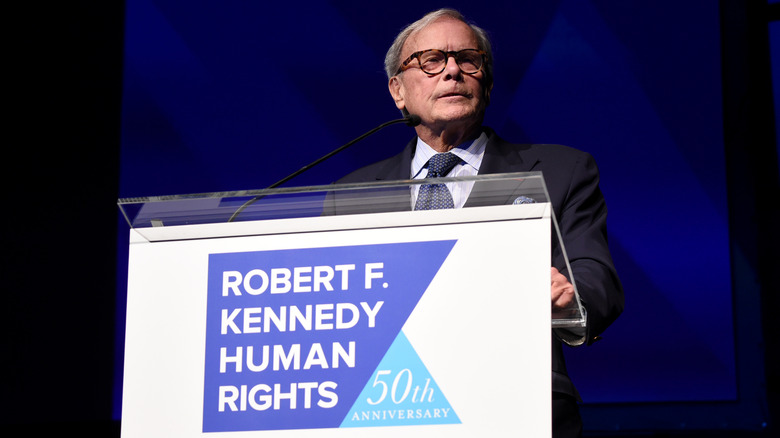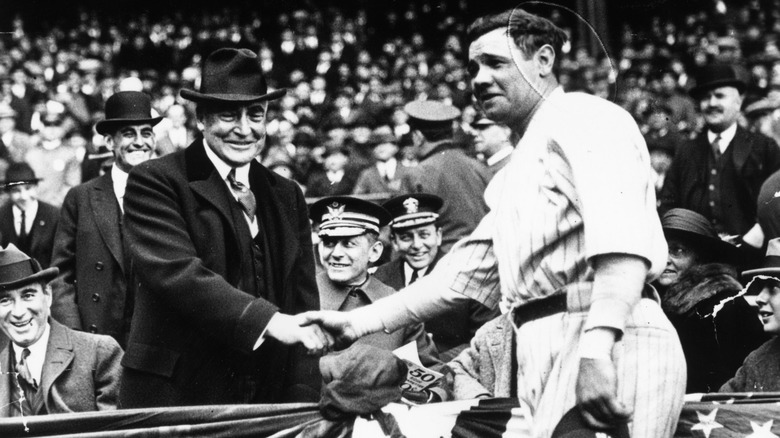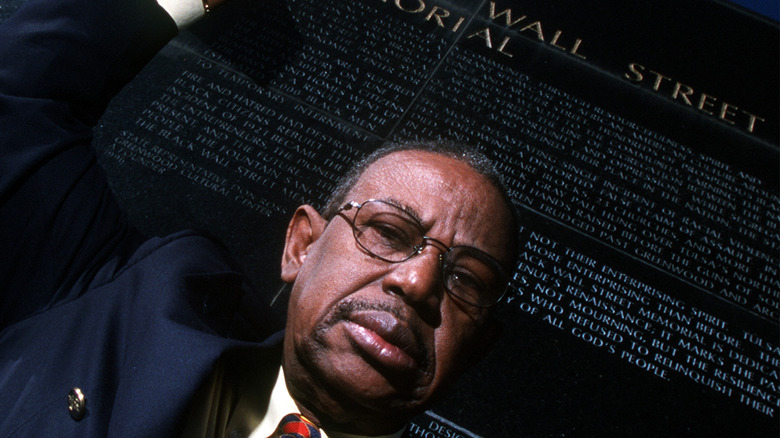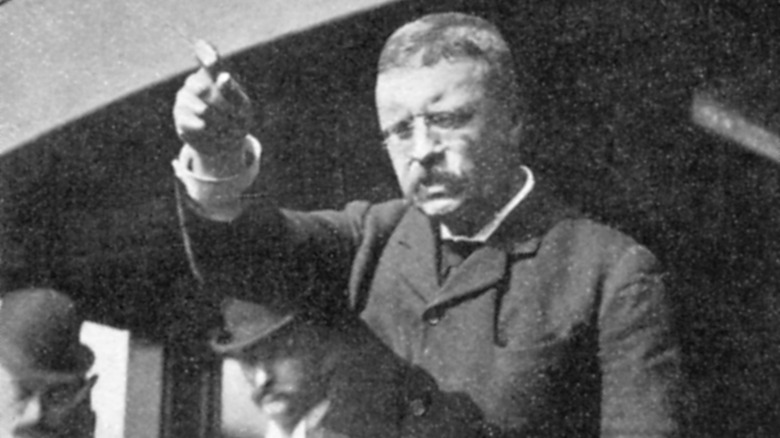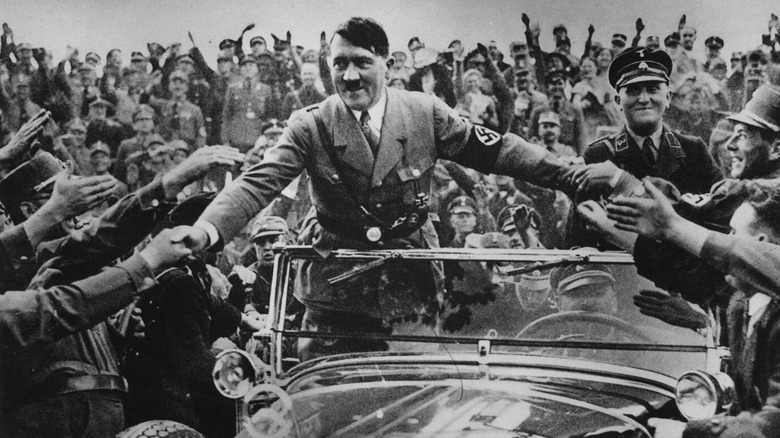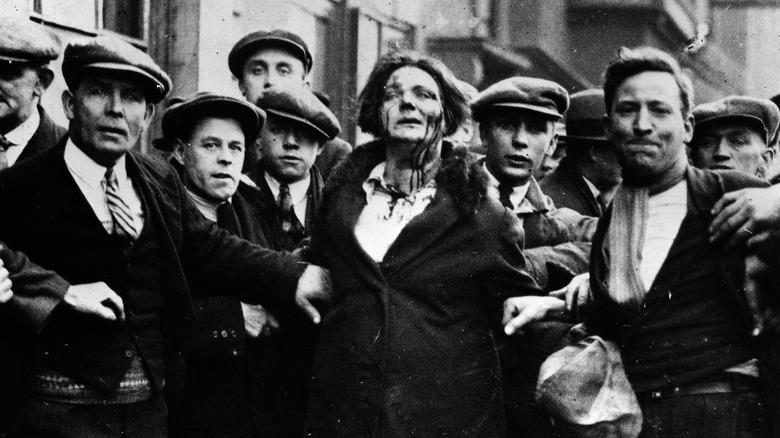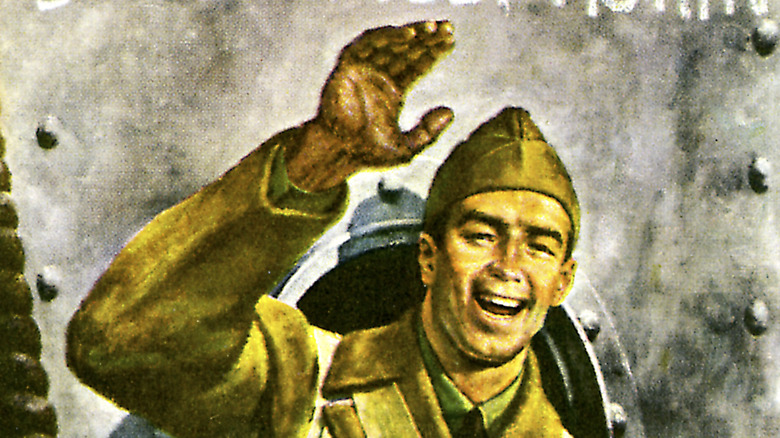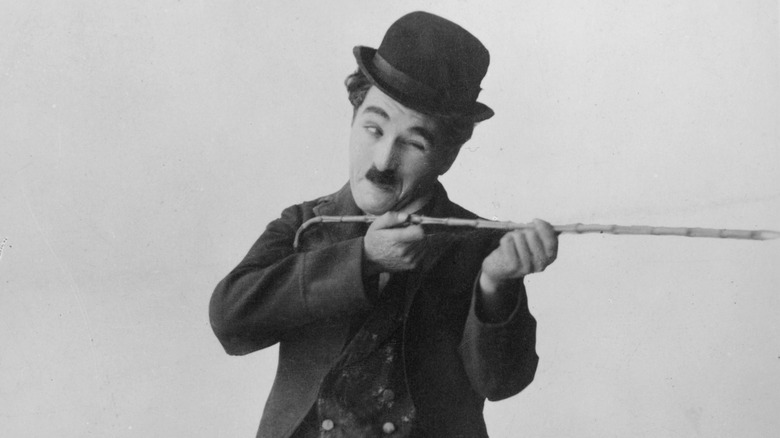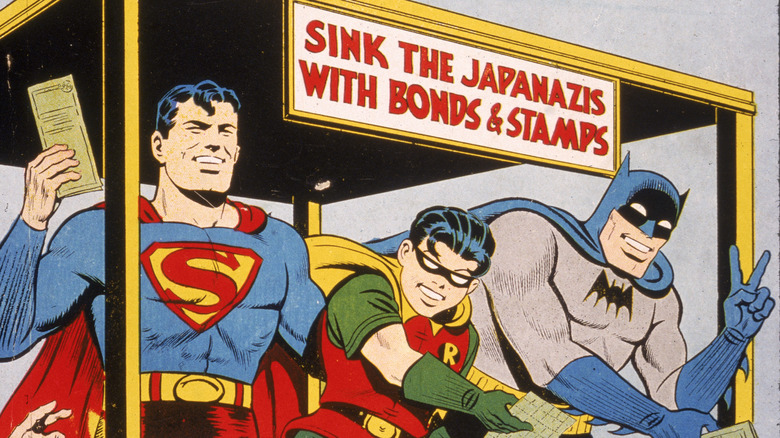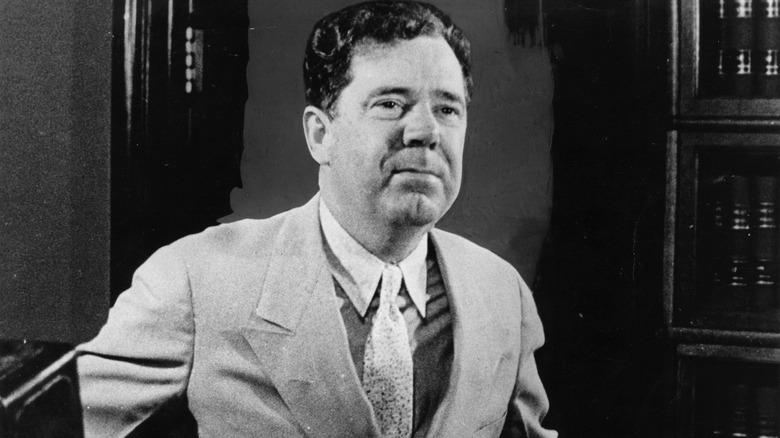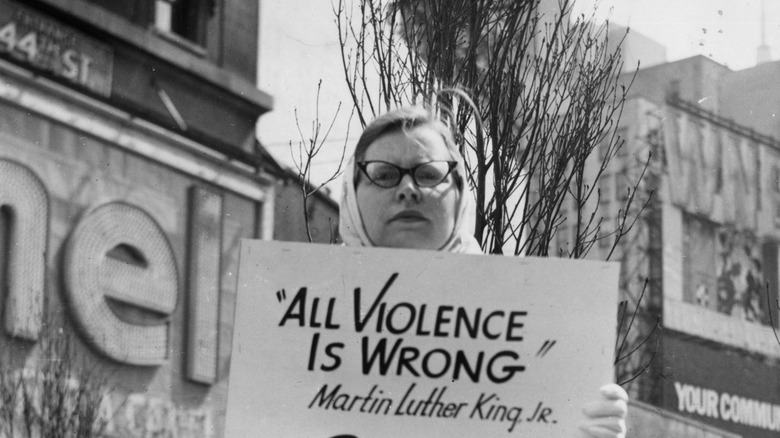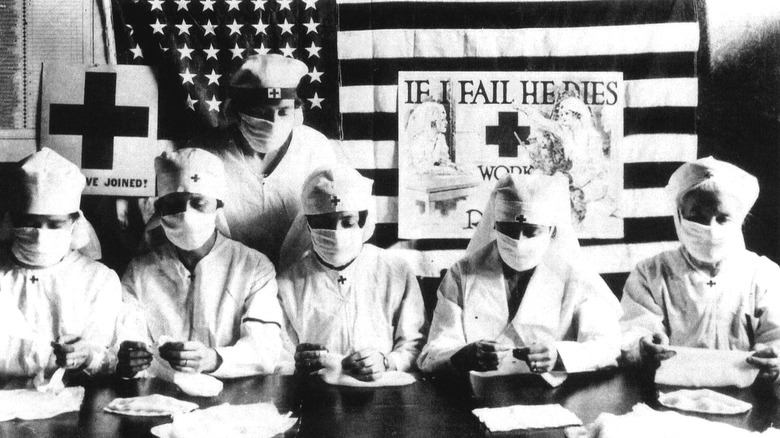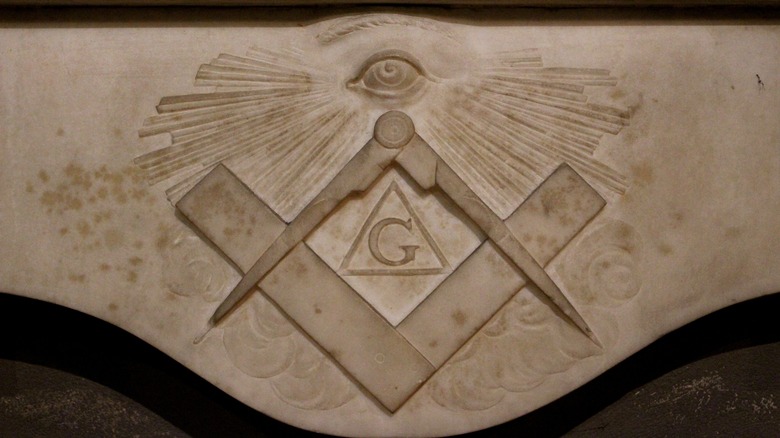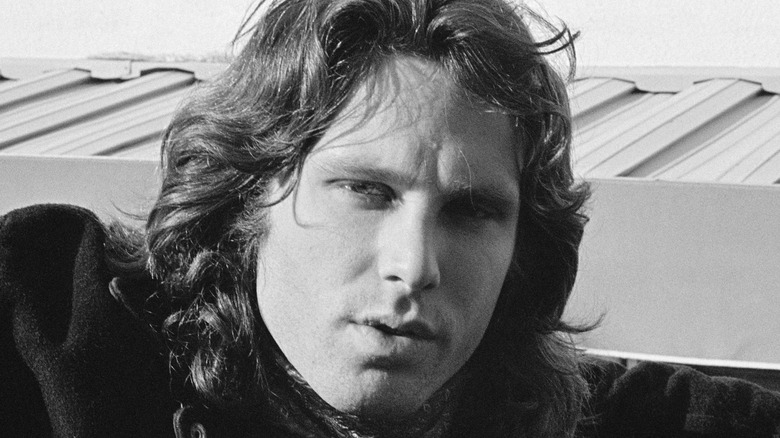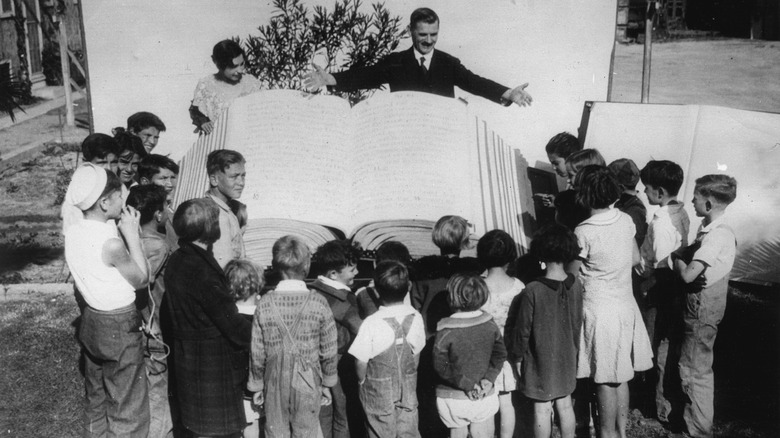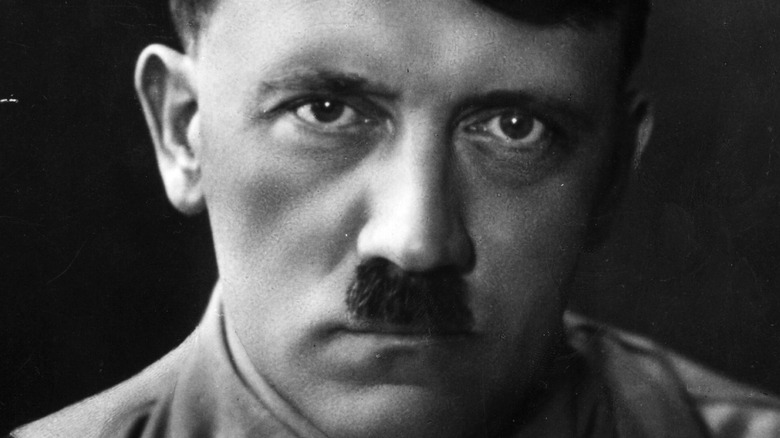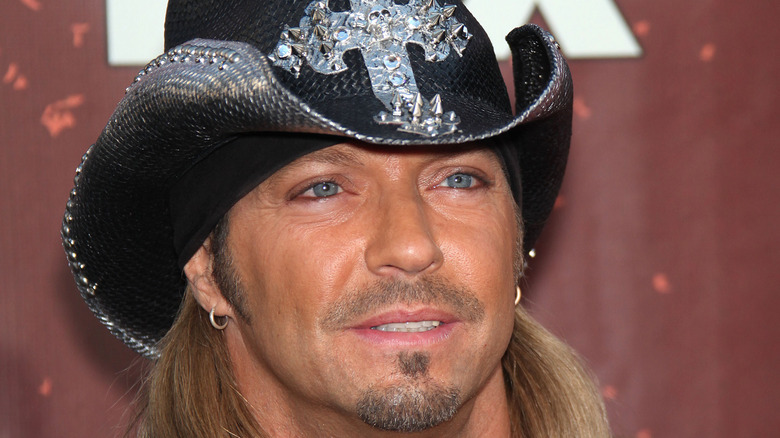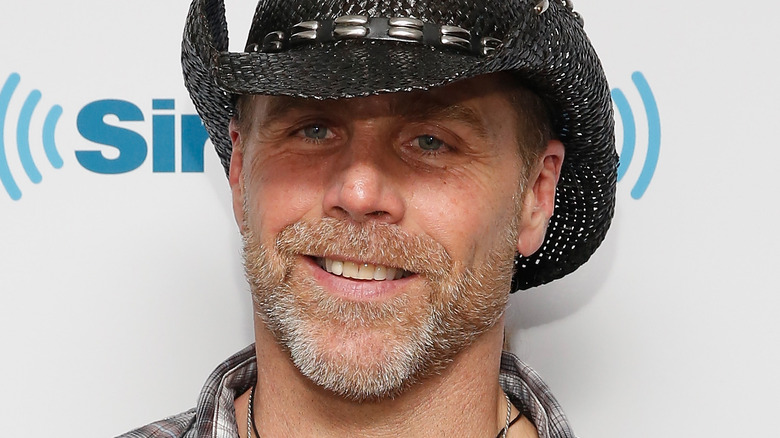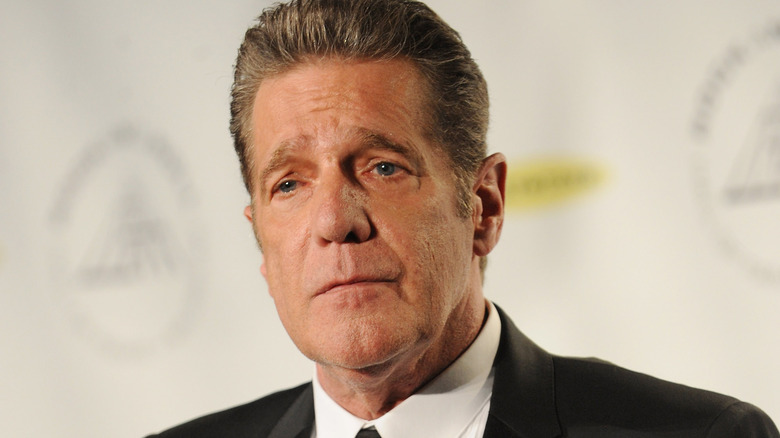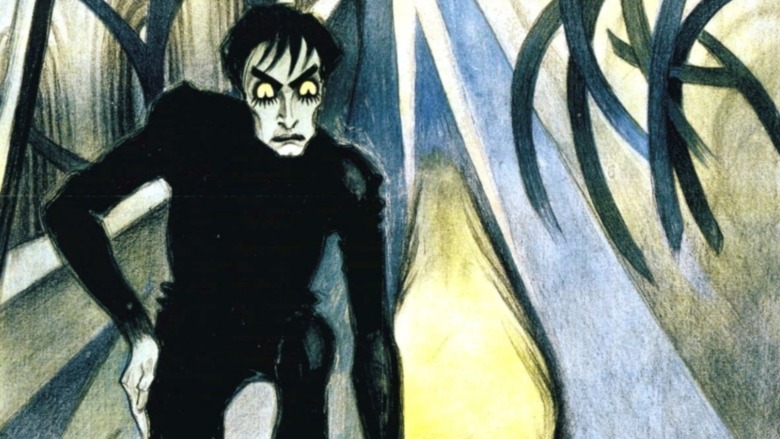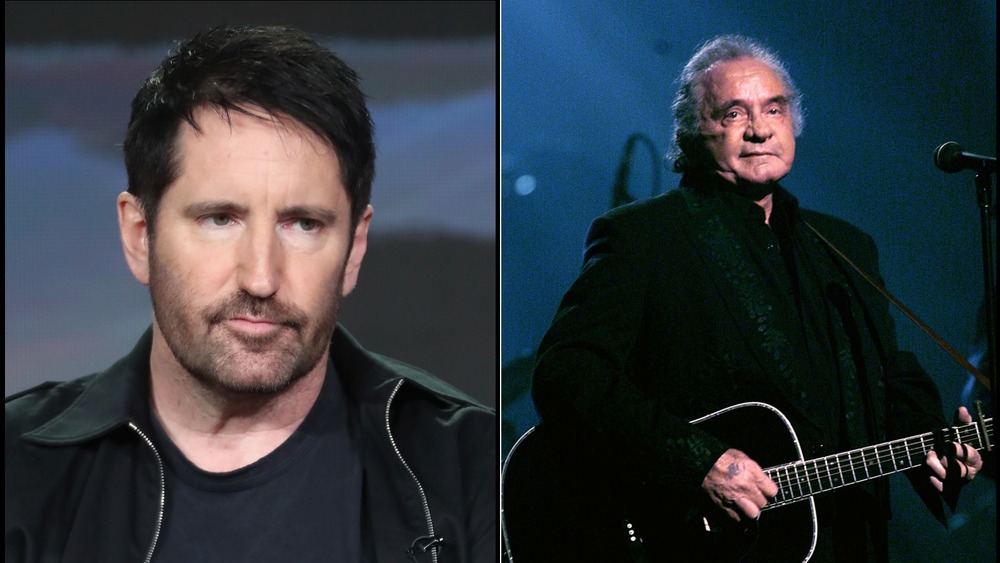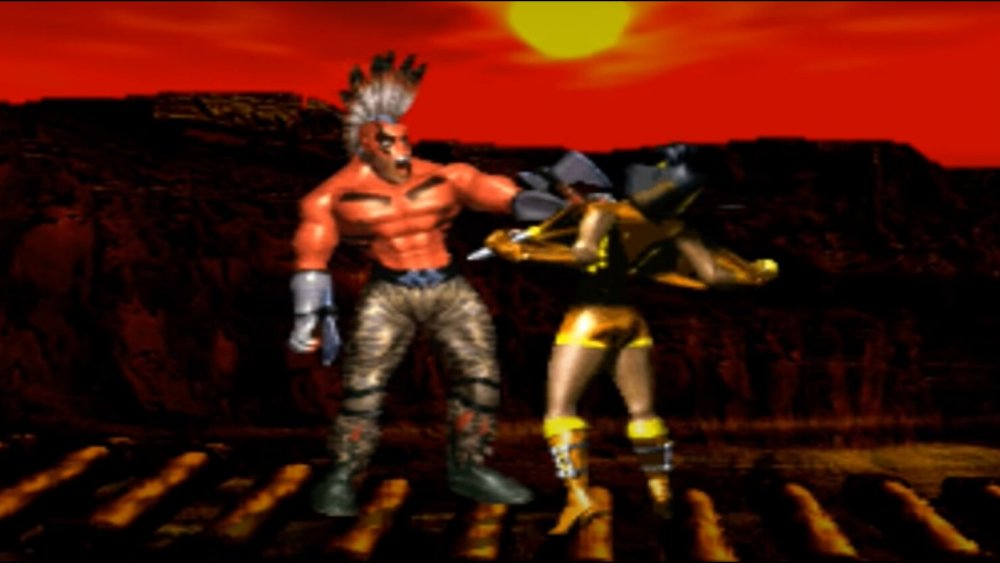
False Things You Believe About The Greatest Generation
To be referred to as the greatest is something special. Seeing that opinions and perspectives can be as unique as snowflakes, for one singular person, group, idea, or construct to be held as the best is an impressive feat. A generation being known as the best generation says something amazing about the people born at that time.
According to Family Search, the people born between the 1900s and 1920s are considered members of the Greatest Generation. Like many of their parents, a great deal of the people born during this time period had to fight in a massive, globe-spanning war. Both World War II and the decade preceding it would mark this generation as the greatest. The end of World War I saw the beginning of a global pandemic, and by the end of the 1920s, the world was entering the global economic crisis of the Great Depression. In the face of warfare, economic instability, and other hardships of the era, the young adults of this generation became known for having admirable characteristics such as humility, integrity, frugality, and commitment.
However, the passing of time has led to a number of myths to be formed around the people who lived in the time period. Here are false things that you believe about the Greatest Generation.
They named themselves the Greatest Generation
In 1998, the generation known today as “The Greatest Generation” was actually known by a different name, Time reports. Prior to that year, those born between 1901 and 1924 were called the G.I. generation, with the initials standing for both “general issue” and “government issue.” However, in 1998, the publication of a book by journalist and author Tom Brokaw (pictured) changed things.
Brokaw’s book, “The Greatest Generation,” gave real life accounts about individuals who grew up in the Great Depression and fought in World War II. The popularity of the book and of its title stuck, and the G.I. Generation became the Greatest Generation. According to Investopedia, Brokaw was inspired to write the book in 1984, when he attended the 40th-anniversary ceremony of the D-Day invasion. Brokaw said of the generation he profiled, “At a time in their lives when their days and nights should have been filled with innocent adventure, love, and the lessons of the workaday world, they were fighting in the most primitive conditions possible across the bloodied landscape of France, Belgium, Italy, Austria, and the coral islands of the Pacific.” (via Business Insider).
The Greatest Generation saw the first sports superstars
By the 1920s, the popularity of radio throughout the U.S. had helped create superstars in the world of sports. Babe Ruth and Jack Dempsey enraptured the public’s imagination and helped shape how athletes engage with fans to this day. However, a generation prior, there were a number of athletes that could make a claim for being the first superstar athlete.
According to Sports Illustrated, heavyweight champion John L. Sullivan holds a claim to the title. The son of Irish immigrants, Sullivan won the heavyweight belt in 1882, 13 years before Babe Ruth was even born! While Sullivan can make a case for being the first superstar, pre-Civil War, bare-knuckle fighter John C. Heenan also has his own case. As told by Slate, like Sullivan, Heenan was born in New York to Irish immigrants. As a teen, he moved to California in search of gold. He began fighting out west, and when he returned to New York in 1857, his reputation as “The California Champion” grew with victories on the east coast. Heenan’s nationwide recognition, as well as a series of matches in Europe expanding his popularity, could mark him as the first sports superstar.
Cap Anson became one of the most important players in pre-20th century professional baseball, Bleacher Reporter says. Anson’s popularity in the sport laid the foundation for Ruth and others to make it “the American pasttime,” though his legacy is tainted for pushing a color barrier in the sport.
The Generation honored all its members
Part of Tom Brokaw’s argument for calling this generation the greatest focused on the sacrifice they made in fighting two global wars. According to The Breeze, more than 1.3 million African soldiers fought against the Axis in World War II and the University of Kentucky found that more than 1.5 million African Americans fought the Axis. In spite of claims of integrity and honor from Brokaw, the white majority in the United States continued to persecute the Black community in what is seen as one of the worst eras for racial justice since before the end of slavery.
According to Black Past, African Americans in the United States suffered 18 different riots and massacres from racist white mobs. This included the infamous “Black Wall Street” Tulsa Race Massacre of 1921, which saw white mobs murder up to 250 people and imprison much of the city’s African American population as Tulsa’s Black-owned business were burned down. The era was also marked by lynchings by white mobs to the point that an anti-lynching bill was proposed in 1916, only to be defeated in the Senate, NAACP reports.
After the attacks on Pearl Harbor, Japanese citizens became targeted by their government. According to History, hours after the attack, more than 1,200 Japanese Americans were arrested without evidence and had their assets frozen. Between 1942 and 1945, 120,000 people of Japanese descent throughout the Americas (mostly the U.S.) were removed from their homes and placed in military camps.
The eugenics movement began during this era
Speaking of institutional racism, let’s discuss eugenics and racial science. While the eugenics movement did see a surge in popularity during the first quarter of the 20th century, as Stanford details, its origins go as far back as ancient Greece with Plato, who encouraged a state-run mating program to “strengthen the guardian class.” Infanticide was practiced in ancient antiquity, including in Sparta, where “ill-born” babies were tossed off Mt. Taygetus to their deaths, History reports.
According to Nature, the eugenics movement took a major step in the late 1800s. Francis Galton, a cousin to Charles Darwin, started to publish and speak on the benefits of eugenics. Arguing that upper-class British society possessed superior intelligence through genetics, Galton pushed for selective breeding programs in his 1869 work “Hereditary Genius.”
The movement came to the U.S. at the dawn of the 20th century. According to The New Yorker, prominent supporters of eugenics included Theodore Roosevelt, Alexander Graham Bell, and John D. Rockefeller, Jr. The movement targeted minorities, people with mental disabilities, and people from working class backgrounds. States passed forced sterilization laws and in 1927, the Supreme Court said it was constitutional to sterilize the disabled. While the ruling would be overturned in 15 years, many people, mostly Black Americans and Native Americans from working-class backgrounds were sterilized before, during, and after the ruling. The American eugenics programs and policies would became influential in Nazi Germany, as reported by The New Yorker.
The Greatest Generation defeated Nazism
One of the greatest accomplishments of the Greatest Generation was defeating Nazism and fascism in World War II. It marked the political superiority of democracy over right-wing ideologies. Even the victories of Black athletes such as Joe Louis and Jesse Owens over German opponents caused Americans to ignore their racial prejudice and celebrate their country’s metaphorical victories. But Nazism did not disappear completely.
One aspect of Nazism that has to be remembered is that many citizens in the U.S. did not oppose the ideology. The National WWII Museum reports that on February 20, 1939, 22,000 members of the German-American Bund, a pro-Nazi American organization, held a massive rally in Madison Square Garden. With a large number of Americans of German descent, the organization spread Nazi ideology and hosted community activities to try to gain public favor.vNazi ideology also ran in concert with the anti-communist sediment in the country. However, when World War II began in September of 1939, the organization faltered against public pressure. But even with the Nazi’s defeat in April 1945, this was not the end of the ideology. From the infamous attempts of American Nazis to march and rally in Skokie, Illinois in 1978 to the Charlottesville, VA “Unite the Right” rally in 2017, Nazi symbolism and beliefs did not end in 1945, as discussed by the Washington Post.
The Greatest Generation was frugal
Think of personal spending during the Greatest Generation as a sandwich. While the belief is true that the Great Depression saw people become more frugal with their earnings, this was in the middle of two different eras. Prior to the Great Depression, spending on luxury goods was a norm and after the Depression and World War II ended, the government shelled out money like it was going out of stock.
As told by US History, the 1920s marked a major turning point in the U.S. economy. Modern technologies and inventions such as vacuum cleaners, refrigerators, washing machines, and the growth of supermarkets and department stores made life much more convenient and freed up time. At the same time, modern advertising and the availability of credit led to an increase in spending for middle-class Americans. Unfortunately, the free market spending and massive credit debt eventually contributed to the economic crash that would mark the following decade.
But during this time, the government became the big spenders in place of the citizens. According to Britannica, President Franklin Roosevelt’s New Deal programs attempted to put money back in the hands of citizens through government jobs. When World War II began, another form of government spending became common. The Lend-Lease Act would supply the Allies with $50 billion in aid and supplies, History reports, and following the Allied victory, the Marshall Plan to rebuild war-avaged Europe would cost another $13.2 billion, as told by CFR.
The United States was anti-interventionist
According to History, when World War I began, the U.S. public desired to stay out of the war. The country believed in isolationism, and had no desire to go into other nations for unnecessary conflicts. Those who have knowledge of U.S. foreign policy during this era are likely currently laughing, as the United States entered into conflict after conflict throughout the world during this period.
According to Counter Current, between 1900 and 1920, the United States sent its military to 20 different foreign nations. The era prior to World War I was one of imperialism in which the powerful nations of Europe and the United States sought to expand their culture and economies by occupying lands full of resources and raw materials. While Europe focused on the African continent, the majority of the United States’ imperialism was in South and Central America, the Caribbean, and the Pacific.
While American imperialism existed prior to his election, President Woodrow Wilson’s famed Wilsonian Doctrine has become extremely influential and controversial. According to American Foreign Relations, Wilson believed that the United States should take a more active hand in leading the world. Not long after the end of World War II, the Wilsonian belief in the United States taking a leading hand on the international stage became a common foreign policy practice for future presidents, from the Cold War to the War on Terror.
It encompassed Hollywood's entire 'Golden Age'
Radio was not the only form of popular media that gained universal appeal during the Greatest Generation years. The film industry started to take shape at the beginning of the 20th century, and by the ending point of the Greatest Generation, silent films had made way for “talkies.” While the era certainly began Hollywood’s Golden Age, its conclusion would not come for another three decades!
Prior to the 1910s, Hollywood played second fiddle to east-coast film companies, as History explains. However, because of the better weather and the fact that Thomas Edison’s company held a patent on motion picture films in the east, by the 1920s, Hollywood became the film capital of the nation and the Golden Age of Hollywood began. At the height of the Great Depression, movies became more important than ever as a form of escapism. During the war years, films provided pro-American propaganda.
Hollywood’s Golden Age would run throughout the first half century of the 20th century. In the late 1940s, Supreme Court rulings ended the monopoly that Hollywood studios had on films, splitting up production, distribution, and exhibition of films, History reports. It was not until the late 1950s that the era ended, when the explosion of television in households overtook movies.
Superman and Batman were the first superheroes
One might assume that the first comic book hero was either Batman or Superman. They are two of the oldest and most celebrated characters in the genre, with a number of films and television shows starring the characters. Both were the product of members of the Greatest Generation (Bob Kane and Bill Finger for Batman, Jerry Siegel and Joe Shuster for Superman) and helped launch the genre into its golden age. However, predating both heroes was another crime fighting superhero.
According to Toonopedia, the purple clad ruler of the Bandari, the Phantom, predates both the Caped Crusader and the Man of Steel by two years. The character was created by Lee Falk in 1936, who drew influence from Zorro and the Scarlet Pimpernel. Even today, the character remains popular overseas.
Prior to the birth of the Phantom, comics had been around for nearly four decades, as Illustration History reports. “The Yellow Kid in McFadden’s Flats,” published in in 1897, is considered the first comic book, though this mostly came from the inclusion of the phrase “comic book” on the back cover. It featured reproductions of newspaper comic strips. The first comic of original material was published in February 1935, three years before Superman and Batman came along.
Socialism and communism were hated by the Greatest Generation
The GOP has called Democrats “socialist” enough times in the past decade that it has become white noise. However, this is far from a new tactic. As explained by the LA Times, the term has been used as an insult by the Republicans since the 1930s.
Two of the most popular politicians of the era, Huey Long and President Franklin Roosevelt, while pushing back the accusation of being far left, certainly had policies to make many smile. According to Britannica, Long’s tax increases on wealthy Louisanaians led to massive public work projects and his proposed Share the Wealth policy included placing a cap on how much money an individual could hold, his website says.
Roosevelt faced accusation of being a “socialist” on the regular. As explained by Politico, FDR felt that if the government did not actively have a hands-on approach in ending the Great Depression, far left or right ideologies would take over the nation. In spite of the attacks, Roosevelt’s New Deal programs led to his election a record four times.
People in the Greatest Generation were against Baby Boomers
From Malcolm X to Fidel Castro and Nelson Mandela, many of the leaders of social movements in the 1950s and ’60s were born during the Greatest Generation. This fact illustrates that the “generation gap” of the 1960s between the Baby Boomers and their parents is a bit overblown.
As the King Institute detailed, the Student Nonviolent Coordinating Committee made up of student activists worked with the older Southern Christian Leadership Council. Division was not based on age, but ideology and political strategy. Veteran activists like Fannie Lou Hamer and The Deacons of Defense had no issues with using self-defense and brandishing guns, while young activists like John Lewis and Diana Nash were non-violent.
In the anti-war movement, there was more generational fighting, though polls illustrate that by the end of the Vietnam War, the majority of both young and older adults believed involvement in the war was a mistake, Pew Research reports. A generation later, when the Boomers were in their 40s and 50s, the former peaceful generation seemingly went against their previous beliefs as their opinions on military strength to achieve peace lined up with that usually credited to their parents’ generation.
The world wars were the deadliest events of the era
The two world wars wiped out millions of people around the world. However, it was not a gun, bomb, or sword that took the most lives in the era, but instead a disease. The Spanish Flu pandemic of 1918 infected around 500 million people or one-third of the global population, and is thought to have killed between 20 to 50 million people globally, History reports. Because of poor record-keeping, it’s hard to know exact figures, but it’s possible that the death toll could have been as high as 50 to 100 million people.
According to Extra History, the low end of this number would double the casualties of World War I and the high end would surpass the two world wars combined. Spain was a neutral nation in World War I and because of this, they did not limit the press unlike some other nations. As such, it was openly reported when the new flu hit Spain in May 1918. Other nations began to say that the disease began in Spain, hence the name Spanish Flu was adopted.
The first known case of the disease was actually documented in the U.S., at Camp Funston in Fort Riley, Kansas in March 1918. Over the next two months, about 200,000 soldiers from the camp would travel to Europe to fight in the war, spreading the disease to Europe.

What John Hinckley Jr.'s Life Was Like Inside A Psychiatric Hospital
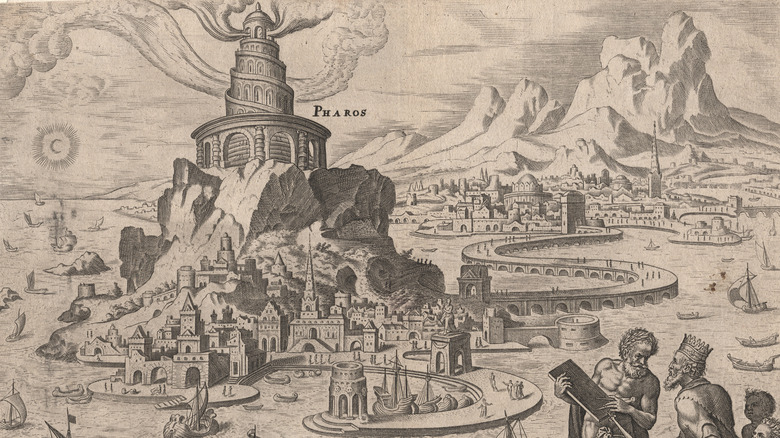
The Untold Truth Of The Lighthouse Of Alexandria

The Surprising History Of Paul The Apostle
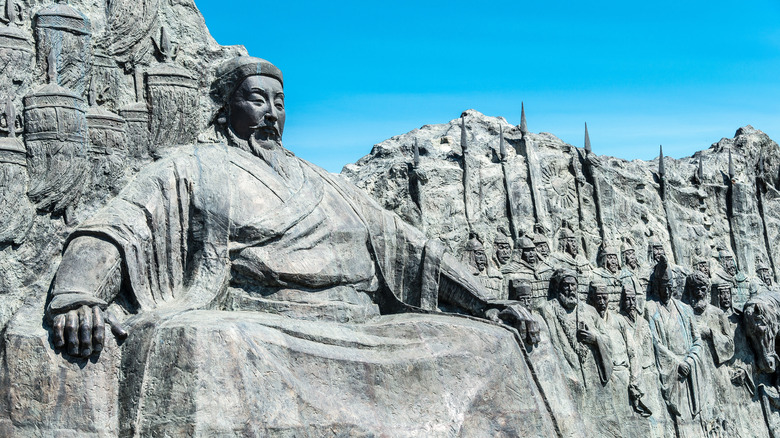
The Truth About The Legendary City Of Xanadu

The Mythology Of Dionysus Explained
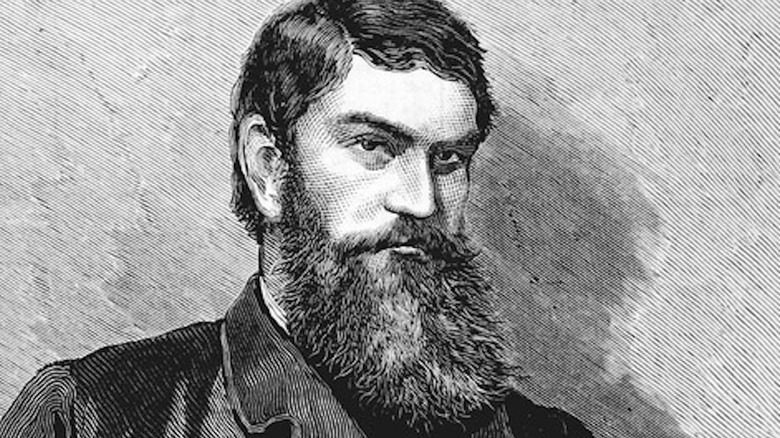
This Is How Murderer Ned Kelly Was Finally Caught
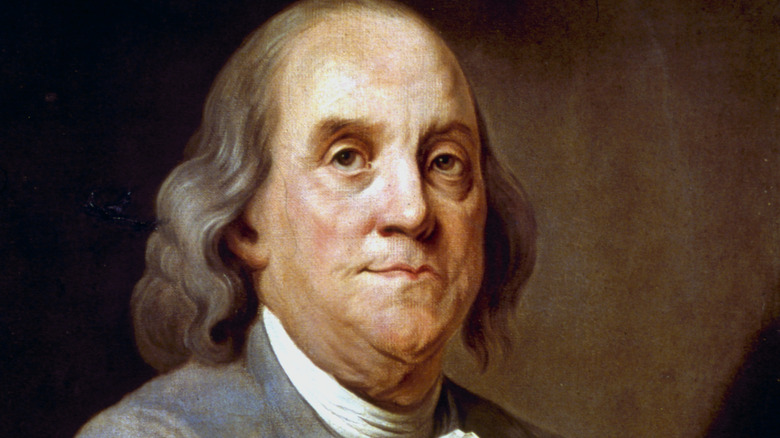
The Truth About Benjamin Franklin's Relationship With His Wife
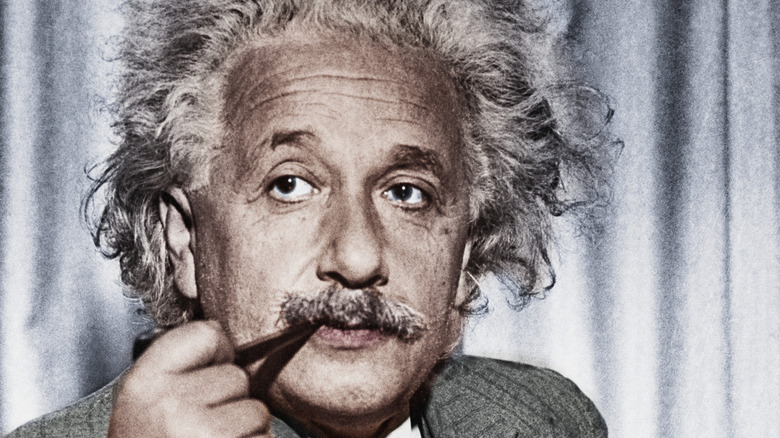
This Body Part Of Albert Einstein Was Hijacked After He Died

The Heart-Wrenching Death Of Champ Biden
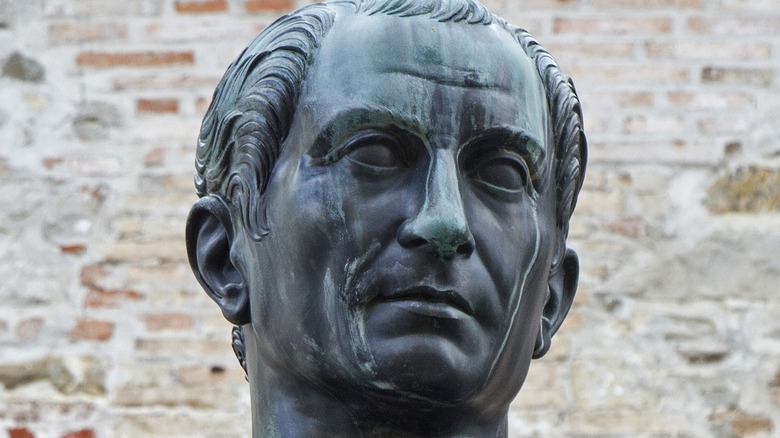
Did Julius Caesar Really Burn The Library Of Alexandria?
